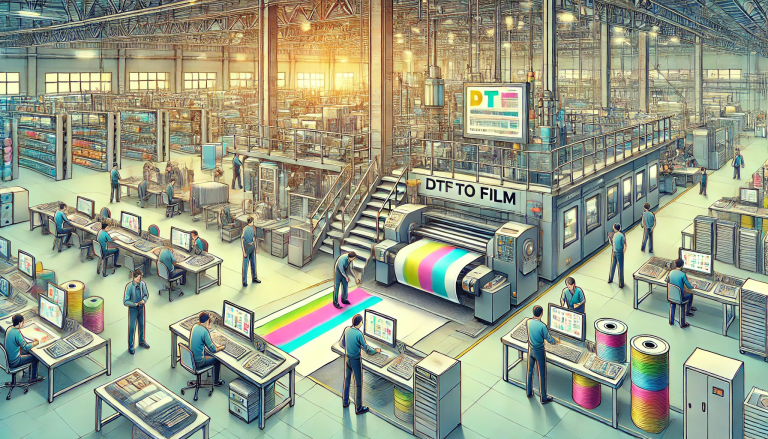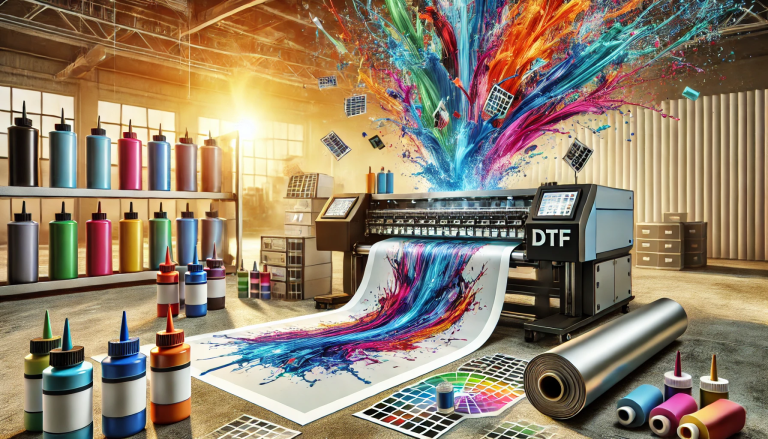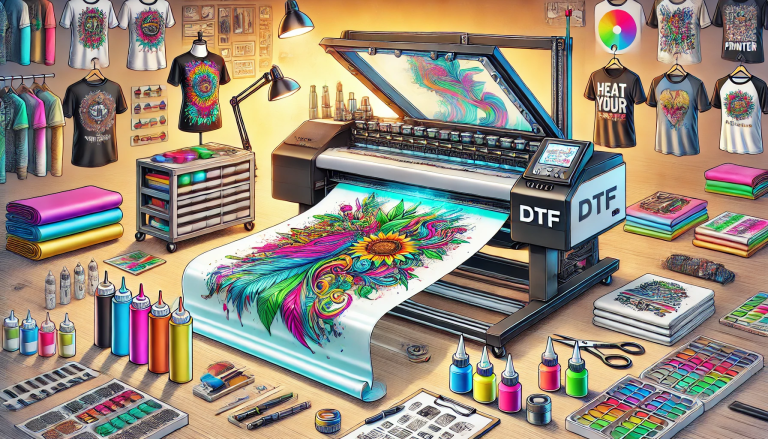“Mastering the Art of Using DTF Transfer Film: A Comprehensive Guide” -MAXDTF- UV DTF Adhesive Transfer Paper Wholesale, Direct to Transfer UV DTF Paper Wholesale, Made in China
In the realm of garment decoration and personalized merchandise, there are various techniques available to bring your creative visions to life. One such method that has gained popularity in recent years is the use of Direct-to-Film (DTF) transfer film. DTF transfer film allows you to transfer intricate designs onto fabrics and other surfaces, creating vibrant and durable prints. In this guide, we’ll take you through the ins and outs of using DTF transfer film to achieve outstanding results.
Understanding DTF Transfer Film:
Direct-to-Film (DTF) transfer film is a printing technique that involves printing designs onto a special film and then transferring them onto various surfaces using heat and pressure. This method is known for its versatility and ability to create high-resolution prints, making it a favorite among DIY enthusiasts, small businesses, and professional printers.
Materials You’ll Need:
- DTF Printer: This specialized printer is designed to handle DTF film and can produce high-quality prints with vibrant colors.
- DTF Transfer Film: Choose high-quality DTF transfer film that is compatible with your printer. The film should have a smooth surface and good adhesive properties.
- Design Software: Use graphic design software like Adobe Illustrator or CorelDRAW to create or customize your designs.
- Heat Press Machine: A heat press is essential for transferring the design from the film to the substrate. Make sure it’s capable of reaching the necessary temperature and pressure levels.
- Fabrics or Substrates: You can use DTF on a variety of fabrics, including cotton, polyester, blends, and even hard surfaces like ceramics and glass.
- Masking Tape: This tape helps to secure the DTF film on the substrate during the transfer process.
- Release Paper: Place this paper over the DTF film during pressing to prevent ink from sticking to the heat press.
Step-by-Step Guide:
1. Design Creation: Start by designing your artwork using your preferred design software. Remember that DTF allows for intricate details, so don’t hesitate to experiment with various elements.
2. Printing: Load the DTF transfer film into your DTF printer and print your design onto the film. Ensure that the printer settings are optimized for DTF printing to achieve the best results.
3. Preparing the Heat Press: Set your heat press machine to the recommended temperature and pressure settings for DTF transfer. This information can usually be found in the DTF film manufacturer’s guidelines.
4. Transfer: a. Place the fabric or substrate onto the heat press. b. Position the printed DTF film over the substrate, ensuring accurate alignment. c. Secure the DTF film and substrate with masking tape to prevent movement during pressing. d. Place release paper over the DTF film to protect the heat press from any ink residue.
5. Heat Pressing: Carefully place the covered substrate into the heat press. Apply the recommended temperature and pressure settings and begin the pressing process. The heat and pressure will cause the ink on the DTF film to transfer onto the substrate.
6. Peeling: After the recommended pressing time has passed, carefully open the heat press and remove the release paper. Gently peel off the DTF film while it’s still warm to achieve the best adhesion.
7. Finished Product: Admire your vibrant and detailed design that has now been successfully transferred onto your chosen substrate. Allow the substrate to cool down before handling or washing.
Tips for Success:
- Test Before Production: Always conduct a test print and transfer on a scrap piece of fabric or material before proceeding with your actual project.
- Quality DTF Film: Invest in high-quality DTF transfer film from reputable suppliers to ensure consistent and impressive results.
- Alignment is Key: Take your time to align the DTF film accurately with the substrate to avoid misprints.
- Temperature and Pressure: Follow the manufacturer’s guidelines for temperature and pressure settings, as they can vary depending on the type of substrate and DTF film used.
- Practice Patience: Allow both the substrate and DTF film to cool down before handling or stretching to prevent any damage.
Direct-to-Film (DTF) transfer film opens up a world of possibilities for creating custom designs on a wide range of surfaces. Whether you’re a hobbyist or a business owner, mastering this technique can elevate your creations and set you apart in the world of personalized merchandise. So, gather your materials, embrace your creativity, and let DTF transfer film unlock new avenues of artistic expression.





